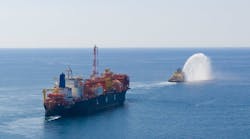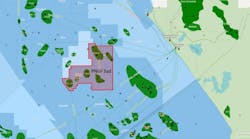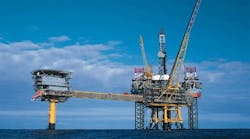Larry O’Brien
Research Director ARC Advisory Group
Procedures govern the world of process automation. Process operations such as oil and gas production, hydrocarbon separation, gas processing, and platform utilities, are no exception. While we like to refer to the process industries as being largely “continuous,” in actuality, process operations – including those in upstream production – are constantly in flux. Whether you are doing a startup, shutdown, or are in the middle of a maintenance turnaround, your production platform is governed by procedures and transitional states that can either run smoothly to provide superior operations and safe and orderly start-up/shutdowns, or can cost you in terms of unplanned shutdowns, incidents, lost or delayed production, and lost opportunities.
Enabling human reliability
Unplanned downtime is extremely costly. Research shows that the largest reason for unscheduled downtime is operational or human error, which accounts for approximately 42% of the unscheduled shutdowns in the process industries. Of that 42%, some 16% is directly related to procedural error.
In our discussions with major operating companies on the future role of process control operators, ARC learned that several majors concluded that this can be addressed through a high-level perspective that enables flawless intervention by exception and relieves operators of manual tasks, freeing time for more value-adding activities. The same research also identified procedure automation as one of the key process automation system functions (along with alarm management and an operational perspective) that can support this environment of flawless intervention, which is so critical offshore. The expertise and operating level of experienced operators can be incorporated into automatic sequences and used to standardize operating methods and to improve the efficiency of all operators.
Humans should be allowed to do what they do best and automation should be allowed to do what it does best. Humans are good at ad hoc intervention and non-linear reasoning. They do best when empowered with an overall production cycle perspective. This thinking should be applied to a good procedural automation strategy.
Manual, prompted, or automated
Today, operational procedures can be lumped into three primary categories – manual, prompted, and automated.
In manual procedures, the operator performs the necessary actions required, either through personal experience or by following standard operating procedure (SOP) manuals. The consistency with which manual procedures are performed can vary greatly depending upon the level of experience of those carrying out the procedures. Manual procedures also call for manual record keeping, which also can vary in consistency and quality. Electronic records are preferable, but their quality can vary depending upon the accuracy with which the data were entered into the system. There is no way to verify that the manual procedures followed were, in fact, consistent with printed SOPs.
Prompted operational procedures go one step further. Here, the procedures are implemented in the process automation system and the operator is prompted to acknowledge that each step has been completed successfully in order to continue. Prompted procedures make it easier to keep electronic records and to verify that operators followed procedures correctly. They also can decrease both transition times and production variability.
Like prompted operational procedures, automated procedures are implemented in the process automation system. The difference is that automated procedures will go through the entire operational sequence before stopping, unless either the operator or the system intervenes on an exception basis. Automated procedures can further reduce transition times and variability.
Many companies have implemented sequence logic that allows procedures to be automated. However, these have been done largely in an ad hoc framework using custom programming methodologies that can become cumbersome when it comes time to upgrade the automation infrastructure. This ad hoc approach also carries a high cost of ownership, since the end user must maintain the procedures. Changes made to the code over time can create a tangled mass of “spaghetti code” that can be impossible to translate.
Many process industry companies today, and particularly global energy companies, are the result of mergers and acquisitions. Along with M&As, come the many system platforms and unstructured code implementations that each participant has accumulated over the years. Clearly, this is not a sustainable way to do business. As a result, more and more owner/operators are standardizing approaches and many have either already adopted, or are considering adopting procedural automation.
Major operational incidents are usually the result of a confluence of factors, all converging at the same time to create an environment outside of the normal pre-operations testing environment. Most recent incidents have some sort of procedural element associated with them. Either proper procedures were not followed, or no standard operating procedure was defined for the operator or maintenance personnel to follow. Many procedures in the process industries tend to be manual or guided procedures. While there is a place for these, any process environment can benefit greatly from a drive to automate many critical procedures, such as startup and shutdown.
The need for a procedural automation standard increases as the workforce (including offshore platform crews) continues to lose the highly experienced personnel who understand these procedures. There is no meaningful way to capture that knowledge to guide future operator/maintenance actions properly to prevent incidents. With strong support from the process automation end user community, the ISA 106 standards committee recently was formed to address this issue. Owner/operators within the offshore production industry would do well to investigate and support this initiative.
Offshore oil and gas operations
Offshore platforms are as just as susceptible to incidents related to procedures, and perhaps even more so, than other process operations. Here, turnarounds and unplanned shutdowns are the largest sources of lost production. A well-thought-out strategy for procedural automation can help reduce turnaround times, reduce the chance of an unplanned shutdown, and reduce startup times following interlock trips. Startup and shutdown of offshore platforms can be extremely complex compared to the same operations in other process industries, making safety a primary concern.
In a technical paper published in 1999, several Petrobras engineers documented a successful expert system for starting up an offshore production platform using procedural automation techniques. Here, procedural automation was implemented to verify auxiliary systems, open the valves on the separation systems, open the subsea wellhead valves, start the oil exportation pumps, and open the choke valves of the wells to begin production, all in the correct sequence, at the correct times, and with minimal human intervention. Documented benefits included standardization of startup procedures to minimize operational missteps and startup times reduced by 30% on average.
Readers may be interested to note that this author will host a session on modular procedural automation at the upcoming ARC World Industry Forum in Orlando, Florida, Feb. 7-10, 2011. The forum will also include a session on remote operations management, which should be of particular interest toOffshore readers. For more information, visit www.arcweb.com/res/forumorl.
Offshore Articles Archives
View Oil and Gas Articles on PennEnergy.com




